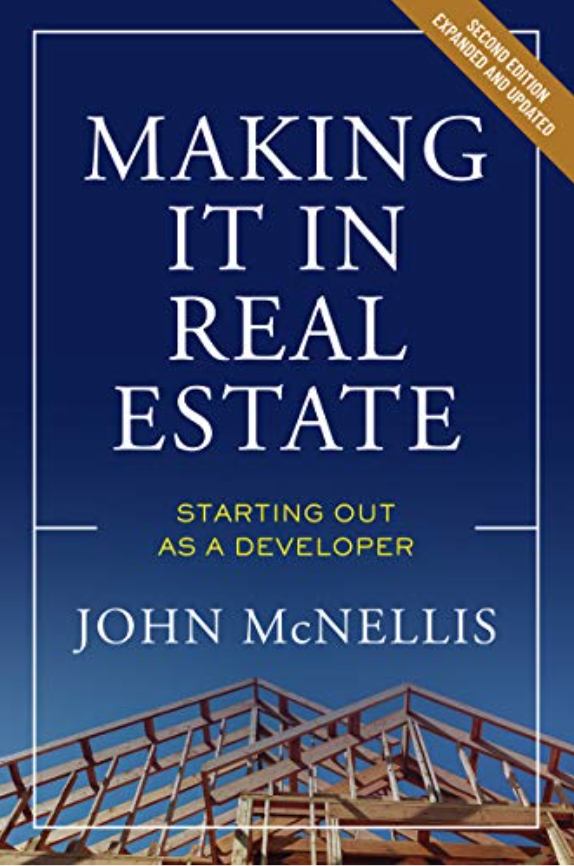Trying to find an exchange property over the last 30 days has had us tire-kicking a passel of old shopping centers, a few worth the renovation. Each older center we examined more closely has a contamination issue, often surmountable, sometimes not. If you ever wonder why a great infill site remains nothing more than leaky buildings and weed-cracked asphalt year after year, try guessing contamination.
In 2001, we were in escrow to buy a broken down Bay Area shopping center. As our due diligence unfolded, we discovered the center’s drycleaners had leaked a minute amount of the dry cleaning fluid perchloroethylene, commonly known as “perc,” into the soil below. As the tenant had long since ceased using the solvent, the leak had occurred in the distant past and whatever contamination had stabilized. Because the groundwater beneath the site was not potable, the contamination was barely above detectable, and the seller willing to remain responsible for ongoing monitoring and cleanup, we purchased the center.
At the time, the environmental consultants assured us—and no doubt the seller—that a few more quarters of monitoring were all that would be needed to obtain the closure letter necessary for a clean bill of environmental health. Eleven years and nearly $600,000 later, the environmental consultants still whistle the same tired refrain—a few more quarters of monitoring.
If you’re lost in Rome and you ask an Italian for directions, he will happily tell you, “Go a few more blocks.” You then trudge half a mile farther until—certain you’ve gone astray—you ask the next Italian, and she will tell you, “Two, three blocks, and you are there.” Out of misplaced kindness, the ever-charming Italians will rarely admit your route would challenge an Olympian.
Environmental consultants are surely well intentioned—after all, they’re engineers, the most decent and sincere professionals in real estate—and perhaps even kind, but economic incentive is one of the most powerful forces in the universe. And with “cost-plus” contracts the overwhelming industry norm, where is their economic incentive to ever have a closure letter issued? And does the regional water board’s staff ever want to sign one? Both sides can busy themselves forever, testing trace amounts of chemicals deep below the surface that cannot, even under the most zealous approach to safeguarding public health, be considered a realistic threat to society.
This vignette might have little resonance beyond our offices were it not for the fact that the same story is likely being played out thousands of times today across the entire country at astounding public expense. We have been buying and renovating worn-out shopping centers for almost 30 years. Each old gas station and drycleaners we have ever tested has leaked. We are either the unluckiest developers in America—we seldom think so—or it’s fair to assume this government-mandated digging of holes and then refilling them is pandemic.
Perc has yet to be proven to cause cancer. The most recent National Toxicology Report states that “… it is reasonably anticipated to be a human carcinogen.” But, one should assume that in sufficiently high doses, it certainly would. Even drinking plain water can be fatal if the quantity imbibed is prodigious. As Alice observed in her “Adventures in Wonderland,” “Better read it first, for if one drinks much from a bottle marked ‘Poison,’ it’s almost certain to disagree with one sooner or later.”
Conversely, in minuscule doses, the deadliest poisons often prove to be without harmful—or any other—effect. “The dose makes the poison” has been a dictum in the medical world for literally hundreds of years.
From a self-admitted layman’s standpoint, this seems to be the issue bedeviling environmental cleanups today—there is too little recognition of what “dosage” is actually harmful. When it comes to cleanups, it seems all too often we are forced to perform heart surgery for nose bleeds.
Which landowner would dispute her obligation to remediate contamination that might impact drinking water? But does any owner of a gas station that sits atop bedrock thinks it’s worth a small fortune to eradicate a thimble-full of gasoline residue 20 feet below an impermeable asphalt surface? Has a single office worker ever developed even a nagging cough because an office building’s pipes were insulated with asbestos?
Sound-bite politicians scrambling for votes have scant interest in considering thoughtful, measured responses to contamination issues. Entrenched governmental bureaucracies that use their public directives (remediating toxic waste or protecting endangered species) to achieve their private desires (stopping all development) are worse, exacerbating the problem by calling for ever-tighter standards. And now we have a multi-billion dollar army of private environmental consultants who will only too happily test, monitor, retest and monitor a site until the cows come home.
While no panacea, landowners and developers might consider combating this systematic overkill through their trade groups—the Urban Land Institute, the International Council of Shopping Centers, NAIOP Commercial Real Estate Development Association and so on—by asking them to bring together environmental scientists at industry conferences to discuss and truly calibrate the levels at which soil and groundwater contamination is a health hazard—and then to publish and share their findings with the myriad government agencies overseeing this morass.
In 1984, we were forced to bring in spacesuit-clad workers to remediate a small amount of asbestos from a San Francisco office building. I likened that backbreakingly expensive madness then to the goldfish-swallowing craze of the 1920s—silly, but a swiftly passing fad. As is so often the case, I was wrong. This fad isn’t passing unless we give it a strong push.


